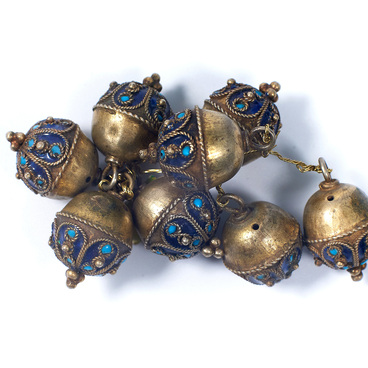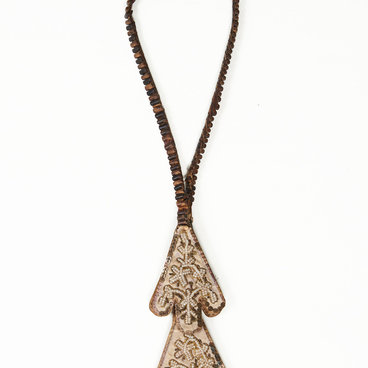The Gorodets house of the counts Panin, which is an art museum today, was built in the middle of the 19th century. The exterior design of the house is typical for Russian nobility. The main house with seven windows has two additional wings to the left and to the right. The house was decorated with a small balcony, hand-carved window shutters, and two gates from the south façade, which connected the main house with wings.
Gate toppers were also used for decoration. A gate topper is a carved decorative element that has a semicircular shape and is located on the gate. The history of the gate topper from the museum collection dates back to the 1880s when the main house was connected to the wing in the corner. There is a version that one of the gates was moved to the west facade, but they have not survived to the present day.
The south façade gates functioned until the late 1980s. By that time, they began to deteriorate, and the city authorities decided to add the larch gate topper to the museum collection. Today, on the site of the old gate, there is a copy made of pine, created by local craftsmen — Gorodets carvers Sergey Sokolov and Viktor Galibin.
The gate topper is also called a gate board. The exhibit is a perfect example of the famous Gorodets woodcarving craft. In this technique, the drawing is made on top of the board without any cuts through the background. Window shutters, doors, and facades were decorated with such carvings. Artisans carved out lions, mermaids, and birds with women’s faces. These flat carvings are believed to have decorated the boats that used to sail along the Volga in the mid-18th — early 19th centuries. At that time, it was customary to decorate the boats with carved wooden boards depicting strange creatures.
The gate topper from the house of the counts Panin features a strange fish and a crown. This is how Gorodetsky carvers depicted whales.
It is believed to be a variation of the coat of arms of the counts Panin, who owned that house. The counts were of noble Italian descent. Their ancestor probably left for Russia from the city of Lucca on the coast of the Ligurian Sea near Genoa. Therefore, sea creatures appeared on the Panins’ coat of arms.
Gate toppers were also used for decoration. A gate topper is a carved decorative element that has a semicircular shape and is located on the gate. The history of the gate topper from the museum collection dates back to the 1880s when the main house was connected to the wing in the corner. There is a version that one of the gates was moved to the west facade, but they have not survived to the present day.
The south façade gates functioned until the late 1980s. By that time, they began to deteriorate, and the city authorities decided to add the larch gate topper to the museum collection. Today, on the site of the old gate, there is a copy made of pine, created by local craftsmen — Gorodets carvers Sergey Sokolov and Viktor Galibin.
The gate topper is also called a gate board. The exhibit is a perfect example of the famous Gorodets woodcarving craft. In this technique, the drawing is made on top of the board without any cuts through the background. Window shutters, doors, and facades were decorated with such carvings. Artisans carved out lions, mermaids, and birds with women’s faces. These flat carvings are believed to have decorated the boats that used to sail along the Volga in the mid-18th — early 19th centuries. At that time, it was customary to decorate the boats with carved wooden boards depicting strange creatures.
The gate topper from the house of the counts Panin features a strange fish and a crown. This is how Gorodetsky carvers depicted whales.
It is believed to be a variation of the coat of arms of the counts Panin, who owned that house. The counts were of noble Italian descent. Their ancestor probably left for Russia from the city of Lucca on the coast of the Ligurian Sea near Genoa. Therefore, sea creatures appeared on the Panins’ coat of arms.



